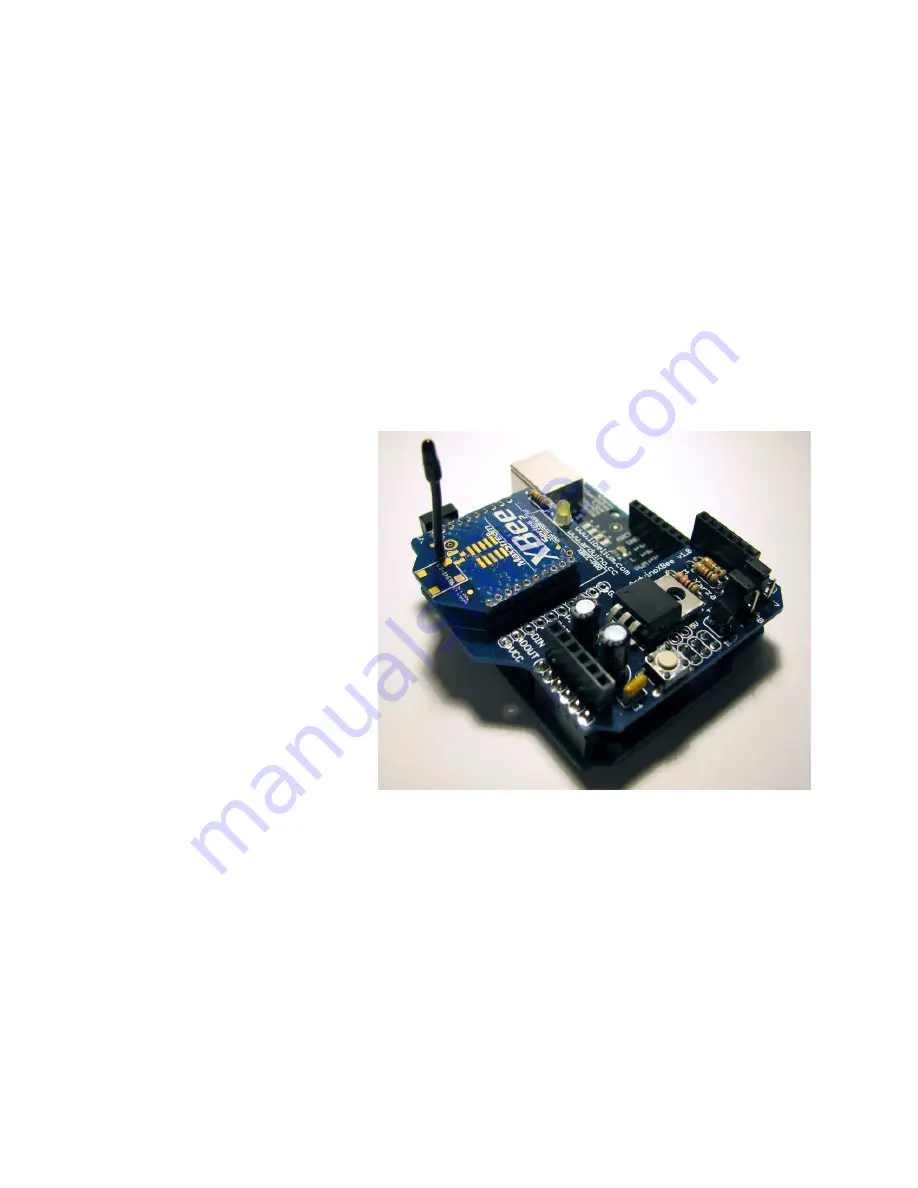
Step 6: Once more, with feeling
Now that you’ve got one of the XBees set up as a router/end device, you can unplug it from the
XBee Breakout board and install it in whetever device it will communicate with; I recommend
plugging it into an XBee Shield for the Arduino at this point. You may also want to put a sticker
or label on this XBee to identify it as your router. Set it aside for the moment.
Now plug your other XBee module into the XBee breakout board and repeat steps 2 through 5
with this module. However, in step 4 you will select the “ZNet 2.5 Coordinator AT” as the
firmware and set the Node Identifier as “coordinator” or something similar. Once you’ve updated
to the coordinator firmware, the “Associate” LED should begin blinking once-per-second while
the “On” LED should remain lit. Confirm the settings in the terminal and move on to the next
step.
Step 7: Creating the network
At this point, you should have one
XBee updated with the “ZNet 2.5
Router” firmware plugged into the
XBee Shield on top of an Arduino
and the other XBee updated to the
“ZNet 2.5 Coordinator” firmware
and connected to the FT232
breakout which is plugged into
your computer. The “Associate”
LED on the Coordinator XBee
should be blinking once-per-
second.
On the XBee shield, you should
see a pair of jumpers labeled
“XBEE/USB”. Remove both of
those jumpers for now. Connect
your Arduino to a power source
(USB or External, doesn’t matter for now). After powering up, the “Associate” LED on the
XBee shield should begin blinking twice-per-second – congratulations; the XBees have formed a
network!
Using the X-CTU terminal connected to the coordinator, type “+++”, wait for the “OK”
response, then type “ATND”. The XBee will respond with the serial number, node identifier and
other information about the router XBee connected to the Arduino.








